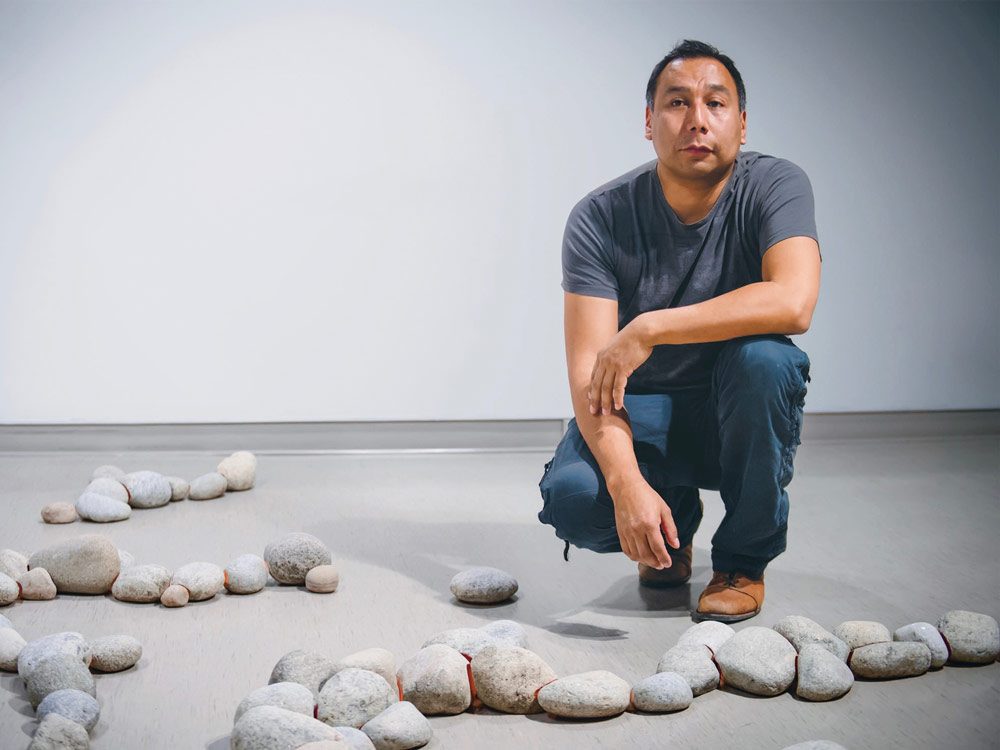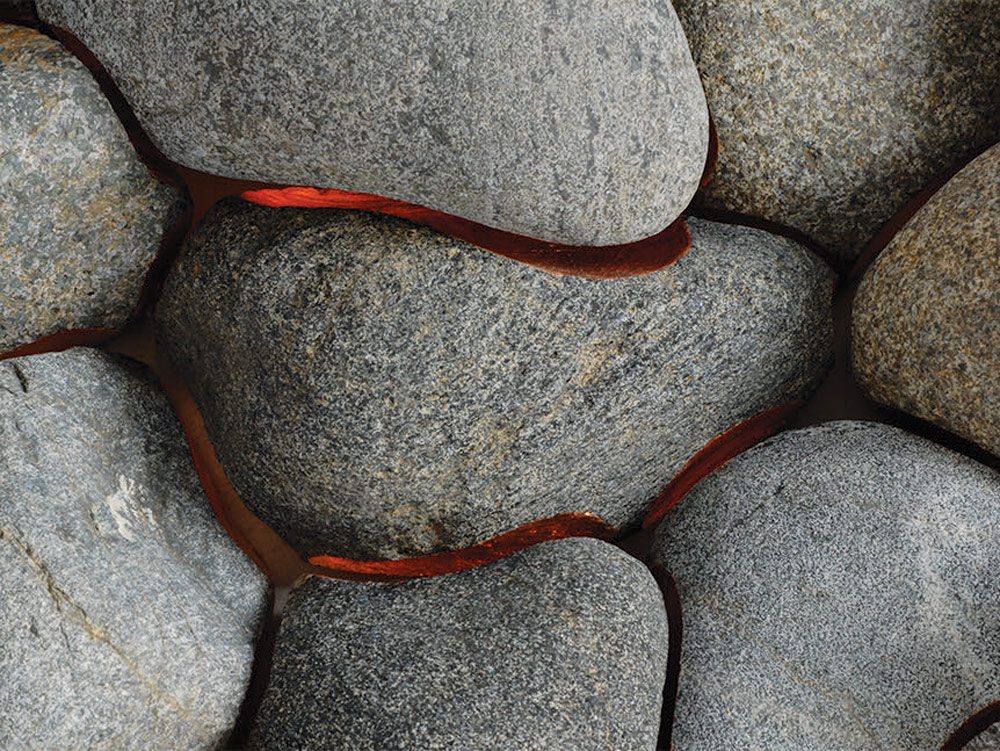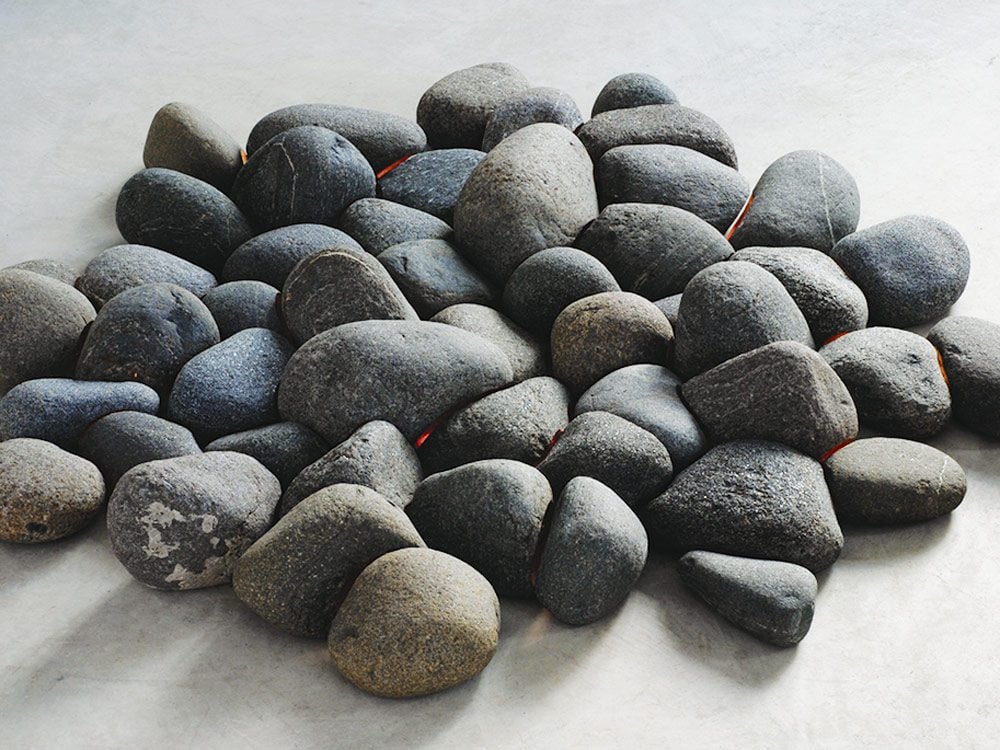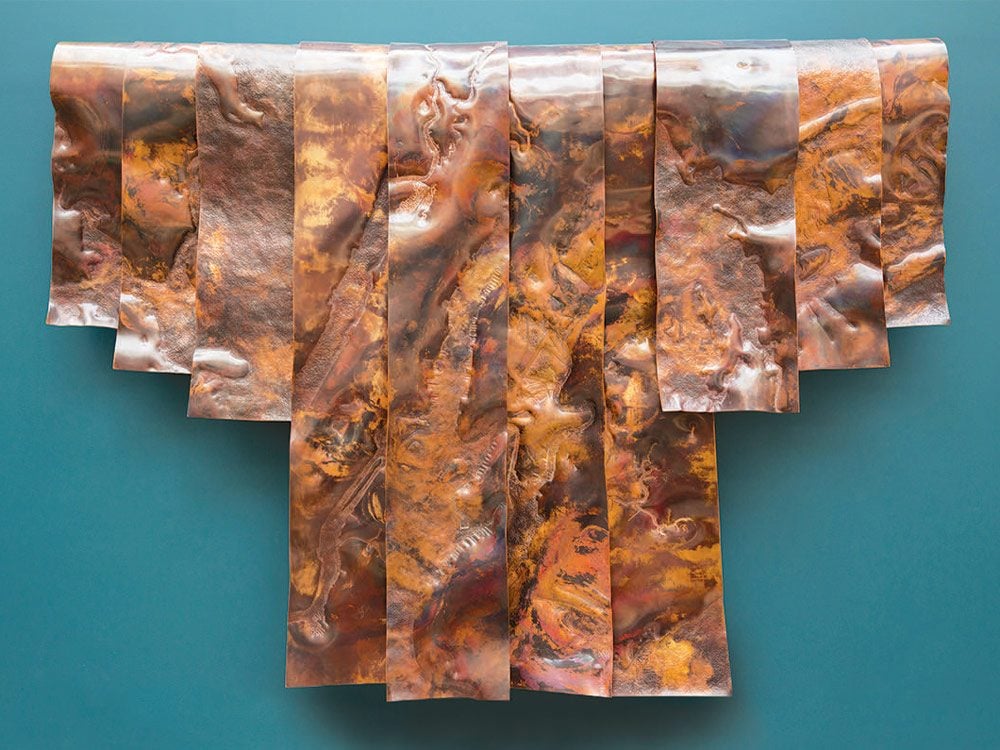
Living off the land
I have been a full-time practising artist since graduating from the Ontario College of Art in 1994. Over the years, I have built a substantial body of work that has employed a variety of materials and processes that at times may seem disjointed, yet, the reality is that when viewed as a whole, my work and processes speak about the environment—about land and water—and what it is to be Anishinaabeg.
I grew up in Upsala, a small truck-stop town north of Thunder Bay, along the Trans-Canada Highway. I was raised by my mom. My “love of making” started as a small child. We did not have a lot of money while I was growing up and as a result what few toys I had, I mostly made myself. I spent hours creating with cardboard and tape, fashioning spaceships out of whatever was available around the house: shampoo bottles, meat-packing trays, bottle caps and other inspiring tidbits. I come from a family of makers, and I think I always knew I was going to be an artist. My grandparents lived off the land; they spent long winters working their traplines, and had to be resourceful in order to survive. I remember spending summers with them, learning how to fish, hunt, pick berries and maintain the wood pile. Summers were spent preparing for the winter, though I do remember having fun. One of my fondest memories is of my siblings and me working away in my grandfather’s shed, using a knife and a hand drill to create wooden boats from driftwood so that we could race them down creeks and rivers. I think this is when I was sure that I was meant to be an artist.
Seemingly small things, simple things, inspire my work: the swing of a hammer, the warmth of a fire, the persistence of waves on a shore. Through the insinuation of such actions, a much larger consequence is inferred. I believe that elemental materials such as water and stone have a voice; they speak a language and have a long history of conversation that extends well beyond our fleeting human existence. Using a range of media over the years—wood, stone, metal—I have attempted to enter into this exchange, offering my voice to speak about the past and the future, about our connection to this land and its ever-changing reality.

The first fire
My first carved stone sculpture was done in Dawson City back in 2003. Unnamed and with no photographic record of it due to a computer crash afterwards, the work consisted of stones gathered downstream from placer-mine tailing piles. Placer mining is a technique by which gold is removed from gravel using water and gravity, and it was impossible to miss the resulting piles of waste from this process while driving into Dawson. The dredging of the riverbeds creates barren wastelands. It was this waste material that I wanted to repurpose into art, so I decided to carve and fit together a collection of stones into a square format. The square was to represent the boundary or delineation of territory (staking land). The carved stone represented our incursion into the landscape. Building on that creative experience, I began to look at mining within my home territory along the northern shores of Lake Superior. I paid particular attention to the historic treaties that were signed with the government of the day, such as the Robinson Superior Treaty of 1850, a most telling portion of which reads as follows:
“…Nor will they (Indigenous Peoples) at any time hinder or prevent persons from exploring or searching for mineral or other valuable productions in any part of the territory hereby ceded to Her Majesty.”
That is to say, the lands being ceded by our Peoples were primarily valued for their commercial potential—and we were not to interfere.
My use of copper inlays in my early work and subsequent art pieces represents the value that is inherent and often hidden in the land. This value is both monetary and universal: What you take from the land that you are standing on—what you learn, what you share, what you have to o er as a result of the land—has a deeper meaning that transcends monetary considerations and speaks directly to our values as human beings.
In my art, copper is fire; it is warmth; it is comfort. We have all had moments of being lost in thought, looking into the lingering light emanating from the coals of a dying fire. The resulting sense of solitude has probably existed ever since humankind first made fire. One of my more recent works called “Smoulder” was inspired by moments such as these. Simply put, “Smoulder” is about capturing a quiet, shared experience we all understand, in all its complexities.
Meet the ethnobotanist working with First Nations elders to preserve Canada’s plants.

Nature’s persistence
I have a memory, or rather a collection of memories, that often finds its way into my art. I am standing on Pebble Beach, located just outside of Marathon, Ont., situated on the north shore of Lake Superior, midway between Thunder Bay and Sault Ste. Marie. The beach of tumbled stone varies in colour—reds, whites, blacks, greys, with a smattering of green—and extends out for what looks to be a kilometre in both directions. I watch as the foam dances on the surface of the water between the crashing waves. Through the roar of water and wind, I hear the subtle “clink, clink, clinking” sounds of small rocks and pebbles as the water recedes. It is this action, of water continually pressing against the shore, that has informed the place where I stand. Rounded and worked together over the millennia, these stones bear witness to the persistence of nature. The physical world we, as people, inhabit is at times humbling. I feel art is an expression of the human body and mind, and that it is fruitless to attempt to contextualize our relationship to nature on a grand scale. What I can offer, however, is a glimpse into how we affect, and are affected by, our environment.
Free from the confines of its solid state and existing in the form of molten liquid and fire, stone once flowed like water beneath “the islands” from and on which we build our lives. My use of gilded copper is meant to express the hidden value locked within the stone. The copper is the warmth, it is the fire, and it is the worth we take from the land.
Learn the story of Indigenous artist and residential school survivor Robert Burke.

The land we all inhabit
Taking a close look at the materials used has always been an important key to understanding my work. Pieces such as “Lost Bridal Veil” were created to evoke consideration on issues of value, and to generate cultural and personal reflections based on that consideration. Copper is indigenous to many parts of North America and mountains are literally moved in order to satisfy our industrial needs. As a pure element, I have chosen copper to correlate to the purity of the landscape, yet it is malleable and readily takes an impression, whether from a calculated or an incautious strike.
Water on the other hand is like blood. It’s part of a circulatory or vascular system—a cycle that flows outwards and eventually finds its way back, carrying with it nutrients and other resources that allow for the creation of life. In the world view of our People through the generations, there is an island of the Anishinaabe (Manitoulin, Ont.) and another island of the Lenape (Manhattan, NY); it is from these points that water flows, now as in the past, creating trade routes, bringing wealth, bleeding resources, offering life and taking life. Manhattan, like Manitoulin, and indeed like the Americas in its entirety, can be viewed as one island we all share, offering a wealth of energy and sustenance to feed prosperity and ambition, nurturing all that is possible.
Not unlike the river systems which we all travel, our experiences mimic the flow of water, sometimes trickling in our collective conscience like a small creek from a glacial melt and sometimes rushing like a torrential waterfall created by spring run-off. “Lost Bridal Veil” speaks to just such a cascade—that moment when things move forward in a dramatic way.
In many ways we all bleed; whether urban or rural, we feel loss and sense the totality of our spilled blood. In my art, I aim to honour the elements and further consider ways in which we inhabit land.
Next, discover Devery Jacobs, the Indigenous actress you need to know.